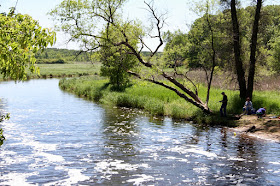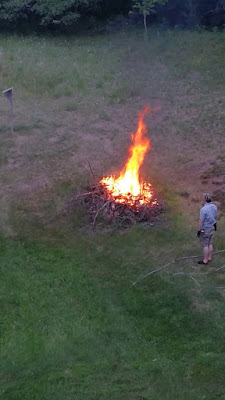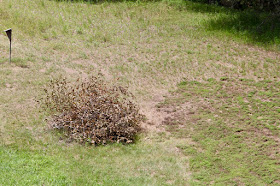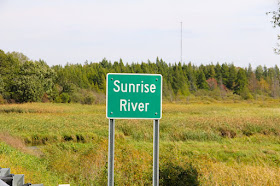 |
| an end result
Photo by J. Harrington
|
When I grew up in New England, lots of folks who raked leaves also strongly believed in the attitude of "wear it out, use it up, make do, do it yourself." That's no doubt where we built a foundation for our dismay at the prospect of throwing out the discards every time we feed the sourdough starters. (We now have two starters, one from King Arthur flour a few years ago and the other we raised from scratch this Summer, following guidance that started with Michael Pollan.) Unless we notice a distinct difference in the flavor or structure of bread baked with one versus the other, we suspect both starters will eventually start cohabiting. For now, however, feeding two starters is creating lots of discards.
 |
| King Arthur starter
Photo by J. Harrington
|
The Better Half used to use most of our starter discards to make crepes, but the amount of discarded starter we're producing seems to have exceeded her appetite for those delicacies. We are now in the process of being overrun with a jug/jar filling with excess starter. Internet to the rescue. We found a recipe for cinnamon-apple flatbread that's supposed to work equally well with fed starter or starter discards. As this is being written, we're boiling down (reducing) apple cider to boiled apple cider and have plans to try the flatbread one of the upcoming cool, wet days in our forecast for next week. We'll also try a recipe using starter discards for soft pretzels. The weather won't dampen our spirits with the schedule we're planning.
 |
| home made starter
Photo by J. Harrington
|
As we were poking around some of the flour-filled corners of the internet, we did discover what looks to us like one of the better sets of instructions of how to bake with sourdough. That author, like yours truly, started with artisan bread and moved on to sourdough. I did try her float test with starter that was fed yesterday; it sank; and starter that had been fed several hours earlier today; it floated. Here comes the old cliche: "if we can bake good sourdough bread, anyone can." It's true! Also, it's fun and even most of our mistakes taste good, better than the paste we made in kindergarten from flour and water that we were often admonished not to eat.
Bread Soup: An Old Icelandic Recipe
By Bill Holm
Start with the square heavy loafsteamed a whole day in a hot springuntil the coarse rye, sugar, yeastgrow dense as a black hole of bread.Let it age and dry a little,then soak the old loaf for a dayin warm water flavoredwith raisins and lemon slices.Boil it until it is thick as molasses.Pour it in a flat white bowl.Ladle a good dollop of whipped creamto melt in its brown belly.This soup is alive as any animal,and the yeast and cream and ryewill sing inside you after eatingfor a long time.
********************************************
Thanks for visiting. Come again when you can.
Please be kind to each other while you can.





















